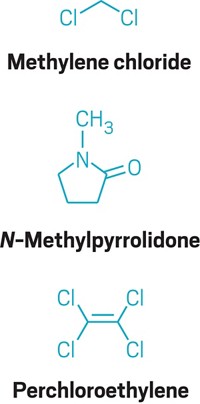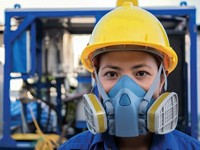Advertisement
Grab your lab coat. Let's get started
Welcome!
Welcome!
Create an account below to get 6 C&EN articles per month, receive newsletters and more - all free.
It seems this is your first time logging in online. Please enter the following information to continue.
As an ACS member you automatically get access to this site. All we need is few more details to create your reading experience.
Not you? Sign in with a different account.
Not you? Sign in with a different account.
ERROR 1
ERROR 1
ERROR 2
ERROR 2
ERROR 2
ERROR 2
ERROR 2
Password and Confirm password must match.
If you have an ACS member number, please enter it here so we can link this account to your membership. (optional)
ERROR 2
ACS values your privacy. By submitting your information, you are gaining access to C&EN and subscribing to our weekly newsletter. We use the information you provide to make your reading experience better, and we will never sell your data to third party members.
Chemical Regulation
Big changes afoot for US chemical risk evaluations
EPA seeks to restore trust and protect vulnerable populations from chemical exposures
by Britt E. Erickson
July 8, 2021
| A version of this story appeared in
Volume 99, Issue 25

Facing lawsuits and criticism from scientists, environmental groups, and the chemical industry, the US Environmental Protection Agency is overhauling its approach for evaluating risks associated with high-priority chemicals that are already on the market. According to Michal Freedhoff, head of the EPA’s chemicals office, the changes will impact the first 10 assessments completed by the Trump administration under the amended Toxic Substances Control Act (TSCA). They will also affect the next 24 assessments, which the EPA has already begun, and those that the agency conducts in the future.
The changes include assessing exposure to chemicals from air and water, as well as from land disposal. During the Trump administration, the EPA disregarded such pathways, claiming that they were already regulated by other statutes, such as the Clean Air Act and Clean Water Act. For 6 of the first 10 chemicals, the EPA will develop a screening approach that uses existing ambient air and surface-water data to evaluate risks to fenceline communities that border industrial facilities.
The EPA also plans to reopen its assessment of the solvent 1,4-dioxane, a widespread drinking-water contaminant, to determine whether drinking water and air exposure pose unreasonable risks to the general population. The agency will also evaluate occupational exposures to 1,4-dioxane generated as a manufacturing by-product that were not considered in its previous assessments.
One change that will affect all the first 10 chemical evaluations is a plan to abandon a use-by-use approach for determining risks. The EPA will continue analyzing risks for each specific use but will make only one unreasonable risk determination for chemicals that have significant risks across multiple uses.
The EPA also will not assume that workers have access to personal protective equipment (PPE) or that they wear PPE properly. The Trump administration generally made such assumptions for the first 10 chemicals, so some findings of no unreasonable risks could change, the agency says.
Freedhoff announced the changes during an event commemorating the fifth anniversary of TSCA reform hosted by the Environmental Law Institute on June 30. Congress amended the law in 2016, giving the EPA new authorities to ensure that chemicals in the marketplace do not pose unreasonable risks to human health and the environment.
“Many actions taken in the last administration left EPA with an internal and external trust deficit, which affected our ability to carry out our core duties and function to protect health and the environment,” Freedhoff said. “It’s also clear that some of EPA’s actions during this time were inappropriately driven by the previous political leadership rather than sound science.”
“None of the first 10 risk evaluations satisfied EPA’s statutory obligations or provided a complete and accurate picture of the chemicals’ true risks,” Jonathan Kalmuss-Katz, a senior supervising attorney with the environmental law group Earthjustice, said during the meeting. The EPA now faces the difficult task of evaluating the risks of 24 additional chemicals, “while at the same time having to go back and fix the mess left by the last administration,” he said.
Lawyers who work closely with the chemical industry commend the EPA for making changes to address increasing litigation related to the first 10 risk assessments, but they question how the agency will meet its deadlines for risk management as it revisits them. “EPA’s between a rock and a hard place,” Lynn Bergeson, managing partner at the law firm Bergeson & Campbell, commented at the meeting. “I applaud EPA for making some very courageous decisions that may themselves invite further litigation.”




Join the conversation
Contact the reporter
Submit a Letter to the Editor for publication
Engage with us on Twitter